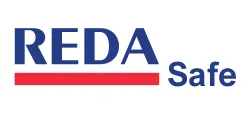Ensuring OSHA Compliance: How a Hydration Safety Plan Keeps Your Workplace Safe

KEY TAKEAWAYS
OSHA's National Emphasis Program on heat hazards offers valuable guidance on protecting workers from heat-related illnesses and injuries.
Introduction
Are you ready for an OSHA inspection focusing on heat-related illnesses, and have you considered how to comply with a potential new federal heat stress standard?
Many heat hazards might seem minor and reversible, but this perception often leads employers and employees to underestimate their seriousness. Overheating and failure to acclimate to higher temperatures can have severe consequences, including fatalities.
OSHA reports that 50 to 70% of heat-related fatalities occur within the first days of working in a hot environment. With rising temperatures from the warmer season and climate change, now is the time to ensure your employees can work safely in hot conditions.
What Does OSHA Say About Heat and Hydration?
Until recently, OSHA provided little guidance on heat-related hazards. However, the OSHA National News Release on September 20, 2021, marked a shift, directing OSHA Area Directors to:
- 'Prioritize inspections of heat-related complaints, referrals, and employer-reported illnesses, and initiate an onsite investigation where possible.
- Instruct compliance safety and health officers, during site visits, to conduct an intervention (by providing OSHA's heat poster or wallet card, discussing the importance of easy access to cool water, cooling areas, and acclimatization) or open an inspection when they see employees working in hot conditions.
- Expand the scope of other inspections to address heat-related hazards where site conditions or other evidence suggest these hazards may be present.'
This release laid the groundwork for OSHA Directive CPL 03-00-024, the National Emphasis Program on Outdoor and Indoor Heat-Related Hazards, which took effect on April 8, 2022, and will remain in place for three years unless extended or canceled.
The directive applies to both indoor and outdoor hot environments, covering general industry, maritime, construction, and agriculture. It provides OSHA with an enforcement mechanism to proactively inspect worksites for heat-related hazards, while also giving employers a framework to proactively prevent illness and fatalities in high heat conditions.
Why Do We Need a National Emphasis Program for Heat-Related Hazards?
There are several reasons why OSHA felt compelled to introduce their National Emphasis Program.
The General Duty Clause Lacks Specifics
OSHA's General Duty Clause states that 'each employer shall furnish to each of his employees employment and a place of employment which are free from recognized hazards that are causing or are likely to cause death or serious physical harm to his employees.' Since heat stress is a recognized and common occupational hazard, employers must ensure their workplaces control heat-related hazards.
However, the clause lacks specificity. It doesn't indicate which industries should comply, provide inspection guidelines, describe heat-related violations or illnesses and their symptoms, or suggest controls like hydration.
The NEP addresses these gaps, offering comprehensive information for law enforcement and employers.
Climate Change
Most heat-related injuries and fatalities occur during outdoor work. While ambient heat and physical overexertion have always posed risks, climate change introduces a new level of danger.
OSHA notes that 18 of the last 19 summers were the hottest on record, and this trend is expected to continue and accelerate, making heat risks more prevalent over time.
Work Conditions
Heat is a common yet often underestimated occupational hazard, leading to many heat-related injuries and fatalities going unreported.
According to OSHA's National News Release from September 20, 2021, despite underreporting, 43 workers died from heat illness in 2019, with 2,410 others suffering serious enough injuries or illnesses to be included in OSHA's statistics. Additionally, OSHA states that 3,500 heat-related injuries are recorded annually.
Should Employers Have a Hydration Plan?
Depending on the work environment and tasks, higher-level controls such as elimination or engineering controls can sometimes be implemented. However, in many cases, these controls aren't feasible, requiring lower-level controls.
OSHA mandates some employer responsibilities, including creating a Heat Illness Prevention Plan with six sections, one of which is 'Provide Water, Rest, Shade.' This section states:
'Employers should provide cool water for workers to drink. Proper hydration is essential to prevent heat-related illness. For those working two hours or more, also provide access to additional fluids containing electrolytes. For short jobs, cool potable water is sufficient. Workers should drink at least one cup (8 ounces) of water every 20 minutes while working in the heat, not just if they are thirsty.'
This makes clear that employers must supply water or electrolyte drinks, specifying at least one cup of water every 20 minutes of work. For more physically demanding tasks or those lasting longer than two hours, electrolyte drinks are needed.
A comprehensive hydration plan should include:
- The number of employees exposed to heat hazards
- The length of time they'll be working in hot environments
- The amount and type of fluids needed (water, electrolyte drinks, or both)
- How access to these fluids will be ensured
Consider that the CDC/NIOSH recommends water at 15°C (59°F) or less, and for sanitary reasons, individual bottles or drinking cups should be provided.
The plan should ensure:
- All workers exposed to heat hazards have access to prescribed hydration
- Workers drink the required amounts
Hydration breaks might be necessary, as workers may not feel thirsty even after working in the heat.
Summary
As the number of hot days increases, worker exposure to heat will also rise. While the NEP for heat illnesses and injuries is not yet a federal requirement, it is strongly recommended that employers implement written safety procedures and training programs to address heat-related job site issues.
Additionally, some states have enacted their own laws governing occupational heat exposure, which may exceed federal regulations. Other states also have hazard-avoidance regulations beyond OSHA's requirements. Employers must understand both OSHA regulations and state statutes on heat-related illnesses and injuries in the workplace. This helps protect workers' lives and prevents substantial fines for companies.
